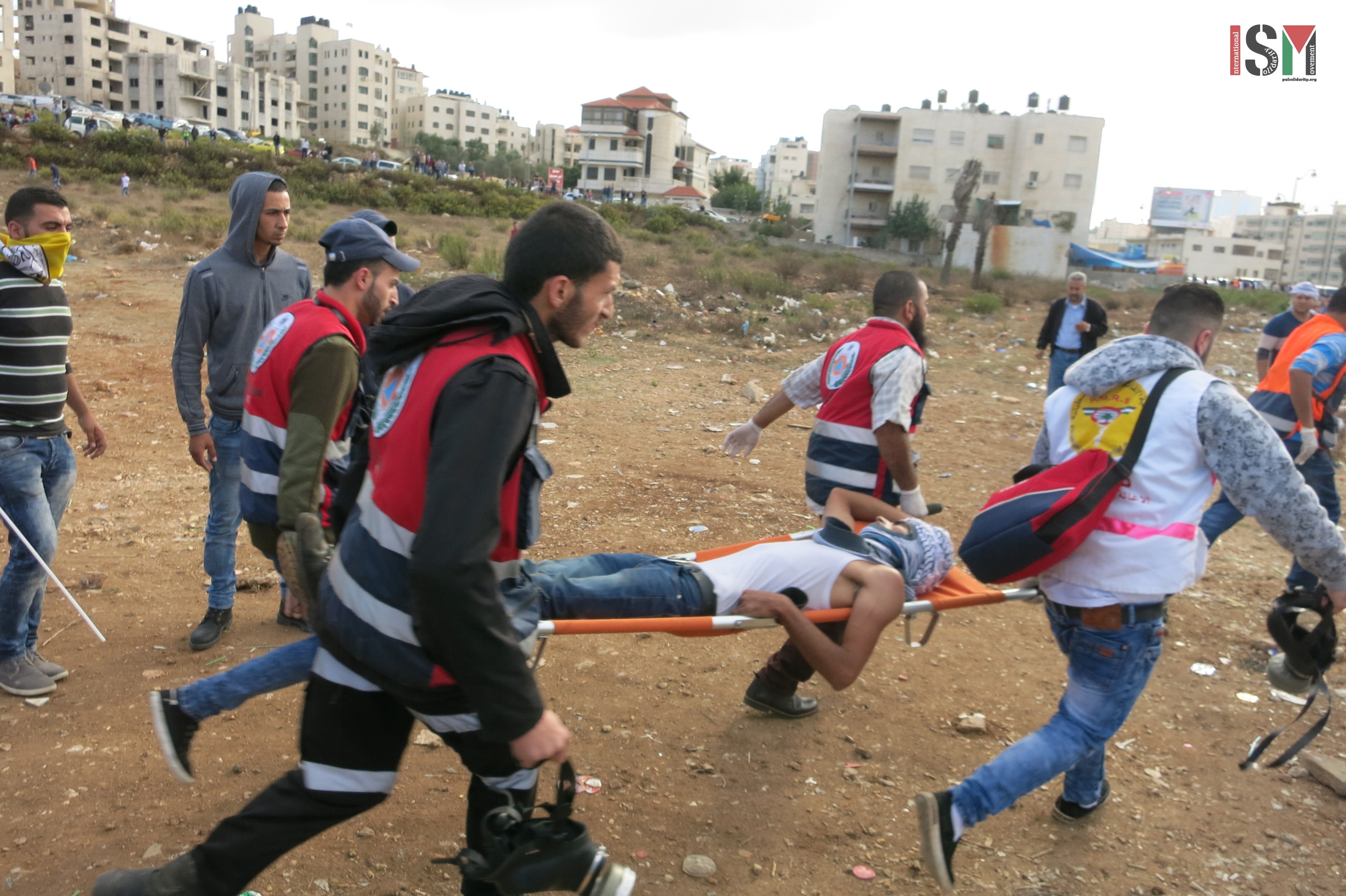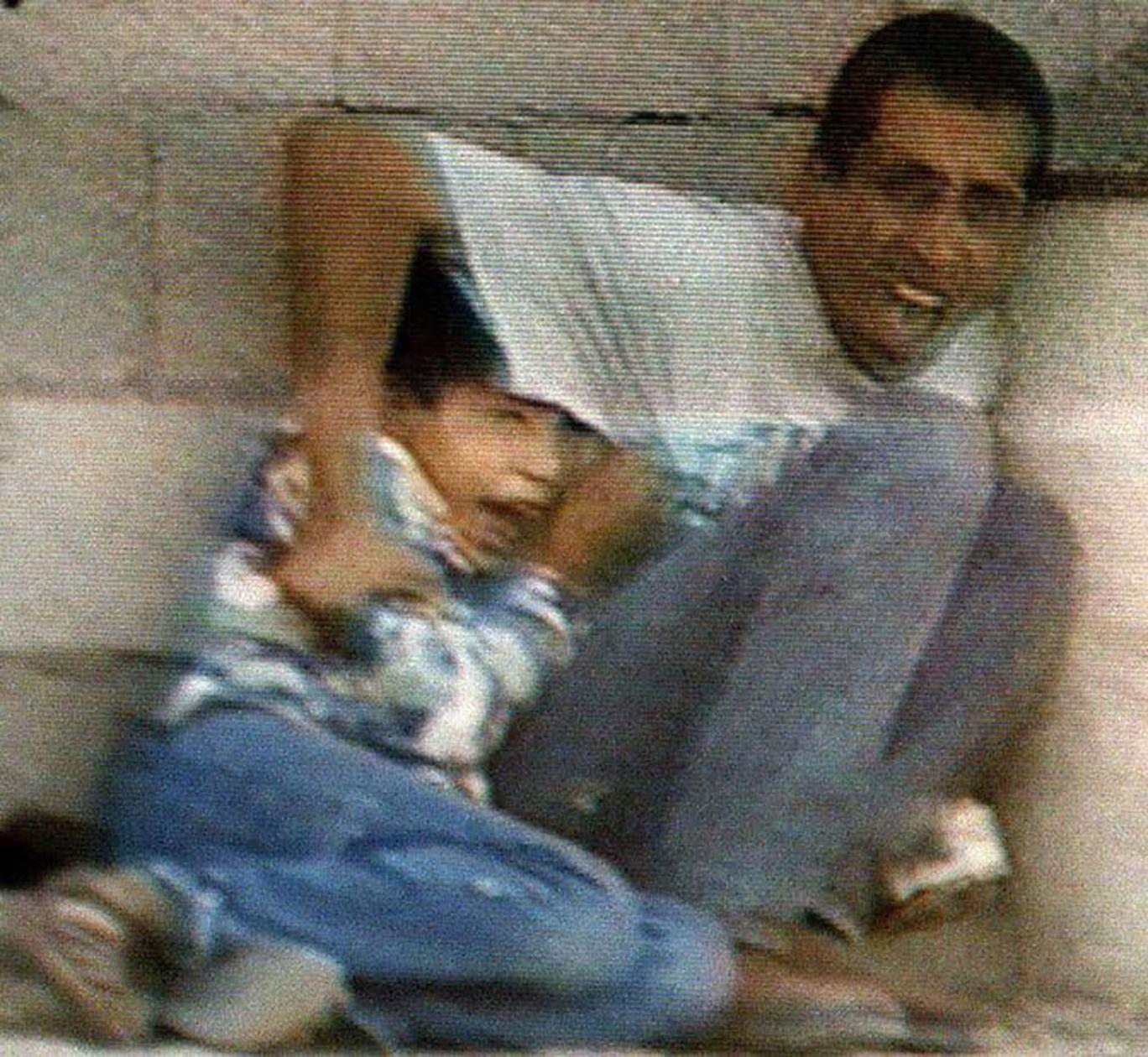Tag: Apartheid Wall
-
Funeral for yet another martyr in Gaza
23rd October 2015 | International Solidarity Movement, Gaza team | Gaza Strip, occupied Palestine Thousands of persons attended the funeral of Ahmad Serhe, 27 years old, in Deir El Balah on 21st October 2015. He was killed the day before in Bureij by an Israeli sniper.
-
Beit El demonstration under attack by Israeli forces after Martyr laid to rest
10th October 2015 | International Solidarity Movement, Al-Khalil team | Ramallah, occupied Palestine Less than one hour after the Halabi family laid their son, martyr Mohannad al-Halabi, to rest in a cemetery in Ramallah, violent confrontations broke out in the nearby Beit El area. In a continuation of the sharp escalation in violence seen across…
-
The fog of war: remembering Muhammad al-Durrah
30th September 2015 | International Solidarity Movement, Al-Khalil team | Gaza, occupied Palestine Chaos in the streets of Gaza. Israeli forces showered the strip with gunfire while Palestinian medics ran frantically to evacuate those crumpled on the ground with blood rushing from holes in their bodies before racing for cover themselves. Running from the violent,…



